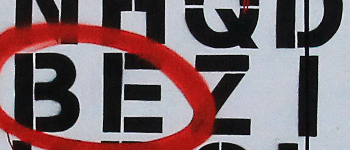I’ve been promising for a while to review Nail Your Novel by Roz Morris. With Christmas here I’ve actually found some time to catch up on a few of my promises.
This is not a how-to-write book. It sits a step or two above that. If you need to know more about point of view, characterization or story structure you should read this book, but add in some others that examine writing at a lower or more specialized level. If, on the other hand, you’re reasonably happy with your progress as a writer and still your attempts to finish a novel founder on problems of organization, control and motivation, this book may be the single missing piece you need to pull everything into place.
Nail Your Novel is, above all a practical guide, and Morris understands that the frustrated novelist needs to feel that everything he or she does counts towards the finished product. You have a project in hand, and you’re not well disposed towards exercises that have you describing encounters between Genghis Khan and Isambard Kingdom Brunel (unless, of course that’s the topic of your book “But don’t you see Genghis, old chap, your slaughter of the Tangut imperial family, and my decision to utilize a broad gauge rail track are but two faces on the same coin!”). It is admirable to work on your skills, but you’re not willing to add another six months to your project. Hence this promise:
What I will make you do is quite a lot of tasks that aren’t writing the actual text of your book. But they will all be work on your novel. But no exercises, no time wasting. From the word go, you are getting on with your novel. This is all work that will shape the finished book.
Morris understands that the kind of person who picks up Nail Your Novel will likely already have a work in progress. She solves this problem by providing a pathway though the book for those of us who are already some way down our own tortured paths. If you’re just starting out on a new project, you can simply work from cover to cover.
For me, the heart of Nail Your Novel lies in the four chapters on writing and rewriting. The first of these, on preparation, helps you with the process of defining the parameters of your novel: the setting, and so on. Morris suggests using a system of cards and colored pens to define a rough outline. This gives you the freedom to play and rearrange, and also limits you to an initial broad brush approach. From here, Morris describes how you can build a detailed synopsis. Clearly, this approach places Nail Your Novel squarely in the outline-first camp in the Great Structure War, so the chapter may be best read together with one or more of the key books on story. I would suggest Story by Robert McKee, The Writer’s Journey by Christopher Vogler, or The Anatomy of Story by John Truby.
Once you have your synopsis, you’re ready to write. The chapter on first drafts is full of good advice and reassurance. Not least of which is the reminder that you are allowed to write as badly or as well as you need in order to be creative. There is nothing you can produce that cannot be fixed. Morris advocates risk taking and experimentation, and thus counters the potential criticism that a planned story is necessarily creatively sterile. In fact she encourages the writer to go off the trail at will, so long as he or she keeps the synopsis in line with each exciting new diversion. The chapter also contains advice for overcoming writers block and staying fresh throughout the long haul.
Nail Your Novel concentrates most on rewriting. This makes sense since a novelist will spend more time on this than any other task. That you get a chance to make your novel good after your first draft is one of the great takeaways of Nail Your Novel. It’s a terrific relief to realize finally that writers are allowed to cheat. You can go back and make it better. And do so as many times as the manuscript demands. Morris starts out by describing the preparation process for the rewrite. This involves the creation of a document called the beat sheet. The beat sheet is a brief breakdown of the scenes in the novel, even those that are flawed or unnecessary. Once you have that overview in place, you can use it to assess your novel’s structure, and the arcs of your key characters. As you work on the beat sheet you should create a timeline alongside it. Armed with this big picture you can amend the beat sheet to correct errors.
Because the aim of this stage is to assess the effectiveness of your scenes, and your novel’s overall structure, the books on story I mentioned earlier may also come in handy here. When you’re assessing individual scenes you may also consider The Scene Book by Sandra Scofield and Make a Scene by Jordan E Rosenfeld.
When you’ve finished, your beat sheet replaces the cards and synopsis that informed your first draft:
The cards game allows you to test the structural soundness of set-up, event and consequence. The beat sheet tests fitness for purpose – whether a scene works, what the purpose should be and how it should be rewritten. One is a tool for generating a story. The other helps you assess the story after you have written it.
Now, armed with your beat sheet, you’re ready to begin the rewrites proper. Morris argues that you should take multiple passes over the manuscript so that you can focus on a different aspect of your novel each time. I think this makes a lot of sense. If you attempt to edit for everything in one pass, you’ll either miss important issues that need work, or you’ll become so bogged down that you never get beyond the first chapter. Suggested areas for attention include setting, character, dialog and tone. Morris argues that you should leave your language edit until near the end of the process. Again, this makes sense. You don’t want to hone to perfection a scene that will then be jettisoned. Best handle your broad cutting and pasting first. Books that might supplement this phase include The Artful Edit by Susan Bell and Self-Editing for Fiction Writers by Renni Brown and Dave King.
The final chapter of Nail Your Novel deals with the submission process. It covers the feedback phase, and the preparation of the synopsis, cover letter, and manuscript. This process is too often skated over in writing literature. How many great novels have never seen the light of day because their authors neglected to jump through the various submission hoops the publishing industry has erected? If you want to avoid the same fate for your work, this chapter is an invaluable starting point. You’ll also need a book like The Writers and Artists Yearbook (UK), or Writer’s Market (US). For additional help with your query letter you should also spend some time at query shark.
This is a fine book. It provides a clean high level view of the novel writing process. While other books delve deep into specifics, Nail Your Novel offers a clear roadmap from conception to submission. A map to which I return periodically as I get lost in the details of a scene, or let my minor characters take over and steal focus from my protagonist.
You can download the electronic version of Nail Your Novel for free.




